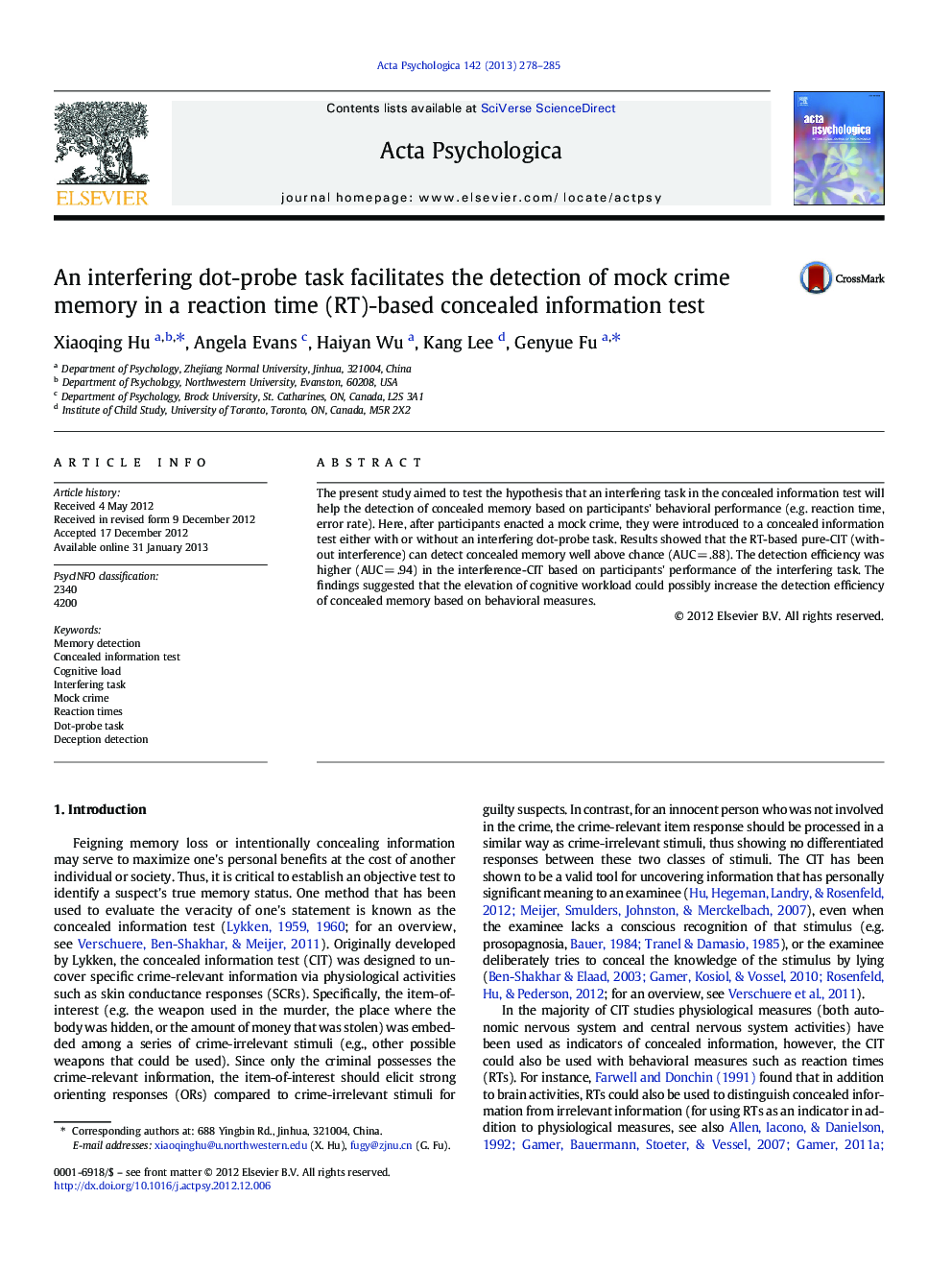| Article ID | Journal | Published Year | Pages | File Type |
|---|---|---|---|---|
| 919892 | Acta Psychologica | 2013 | 8 Pages |
The present study aimed to test the hypothesis that an interfering task in the concealed information test will help the detection of concealed memory based on participants' behavioral performance (e.g. reaction time, error rate). Here, after participants enacted a mock crime, they were introduced to a concealed information test either with or without an interfering dot-probe task. Results showed that the RT-based pure-CIT (without interference) can detect concealed memory well above chance (AUC = .88). The detection efficiency was higher (AUC = .94) in the interference-CIT based on participants' performance of the interfering task. The findings suggested that the elevation of cognitive workload could possibly increase the detection efficiency of concealed memory based on behavioral measures.
► Reaction times (RTs) can be used to detect concealed crime-relevant memory. ► Performance of an interfering task during the CIT increases detection efficiency. ► RT-based CIT provides sufficient protection to innocents.
